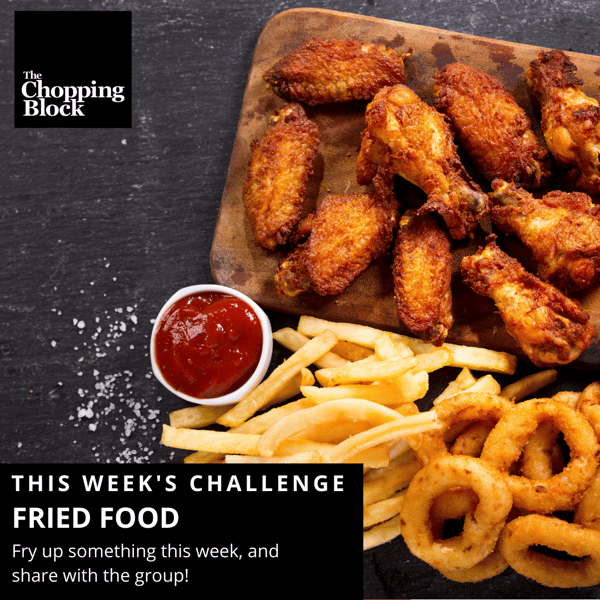When I think of fried foods I am immediately transported to when I was a kid. The nostalgia of carnivals and fairground funnel cakes, deep fried Twinkies, anything deep fried on a stick really makes my mouth water. I can almost smell the sweet fryer oil now! I wanted to indulge in everything. Alas, we were never really allowed to eat these foods but every once in a while, my mom would cave in to my pleas. I admit even now in adulthood, the majority of my cooking at home tends to be fairly clean and healthy when time permits, nonetheless I still treat myself to some fried chicken or other fried food items every once and awhile.
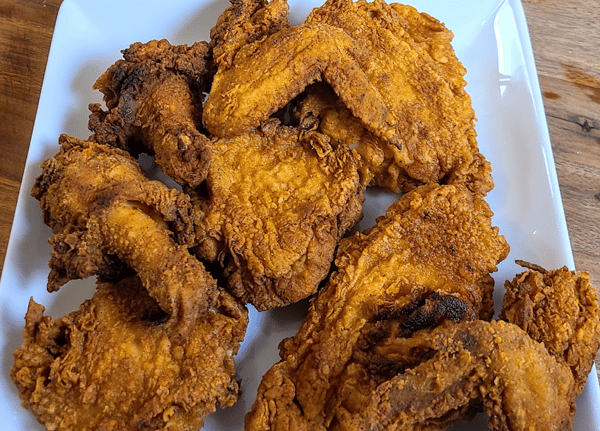 I find that one of the most intimidating of cooking techniques for the home cook is deep frying. I hear it all of the time in my cooking classes. It is that element of danger and unhealthiness that turns most of my students off, but deep frying doesn’t have to be off limits to the home cook. Here I will break down all of the fundamentals to successfully deep fry at home.
I find that one of the most intimidating of cooking techniques for the home cook is deep frying. I hear it all of the time in my cooking classes. It is that element of danger and unhealthiness that turns most of my students off, but deep frying doesn’t have to be off limits to the home cook. Here I will break down all of the fundamentals to successfully deep fry at home.
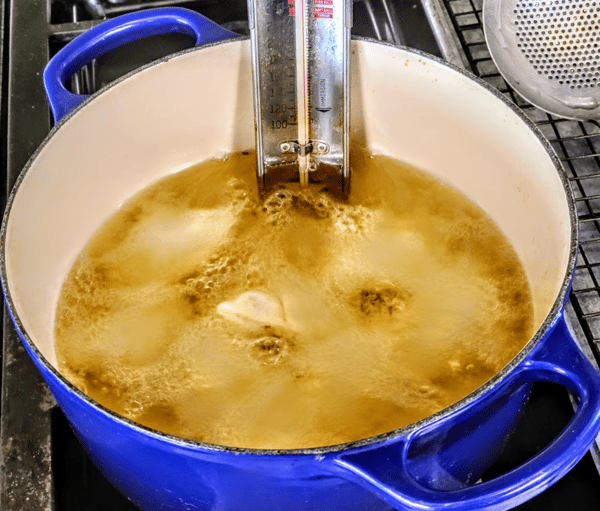
Equipment
It really doesn’t take much specialty equipment to deep fry at home. Any sturdy, deep pot with handles will do. I prefer Le Creuset Dutch ovens because I find that they hold the overall temperature better. When choosing a size to fry in, you want something deep so the oil won’t spill over. You also want a large amount of surface area so you don’t crowd the pan, and you won’t have to work in small batches. A deep fry or candy thermometer is definitely a must have when it comes to home frying. This ensures you know what temperature your oil is at any given moment. You will also need something to fish out your fried foods from the oil. I recommend a spider or large slotted spoon. The large surface area allows for you to scoop up the food with ease and drain excess oil. Yes, tongs may be acceptable as well but depending on what you are frying the tongs tend to be less delicate during handling.
I also like to make sure I have a good landing pad for my fried foods. A sheet tray or a plate with paper towels can do the trick to absorb excess grease but a baking rack over a sheet tray allows for more surface area for the fried goodies to dry off on. All of these items can be purchased in our Lincoln Square store, or you can browse our website and email your order to get everything you need to fry at home.
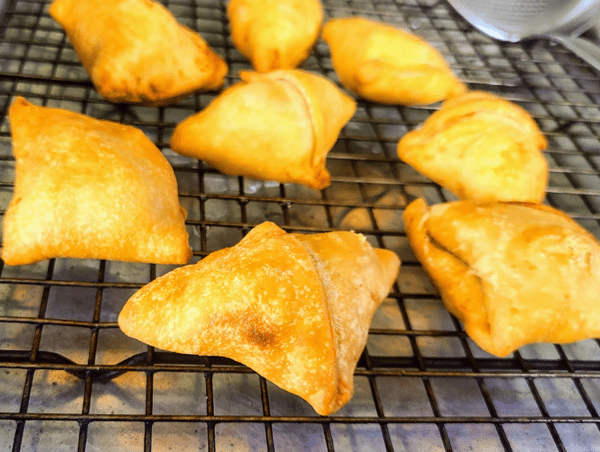
Oil
There are many different types of cooking oils available now. You may have heard the term "smoke point" which is the temperature at which the oil breaks down and produces visible smoke. This is very important to know when determining the type of oil to use when deep frying at home. The highest heat oils that are perfect for deep frying would be peanut oil, safflower oil, canola oil or vegetable oil. These oils can be heated up to 400° without overheating and smoking. The neutral flavor of these oils makes sure the food flavor really shines.
When filling your pot with oil, you want to make sure to add enough oil to go at least halfway up the sides but no more than three quarters high. What you may not know is that you may reuse your oil multiple times in order to get the most bang for your buck. I like to cool down my oil in the pot, then strain it through a fine mesh strainer. I store my used oil in old coffee tins, Mason jars or even the jug it came in. I do make sure to mark my used oil with what I used it for to prevent the foods from taking on the flavors of previous foods I have fried.
I usually only reuse my only about three times. A good rule of thumb is to look at the color and the smell of the oil. If it is still clear and not dark it is a safe bet to use again. When it becomes darker and muddled in color it is time to throw it away. When in doubt, try it out! Taste a bit of the oil and make sure there is no bitterness to it and there should not be any odor. You can also use tablespoons of this oil when just pan frying or sautéing if you don’t plan on deep frying again for a while.
The most asked question I get is how to dispose if the oil when it can’t be recycled. I ca not stress this enough: please do not be tempted to throw your used oil down the drain! The easiest way to throw it out would to be to put it back into a sealable container as mentioned before or even a Ziploc bag and put it in with your regular trash. There are even local resources available that take used grease; you just need to research your specific area.
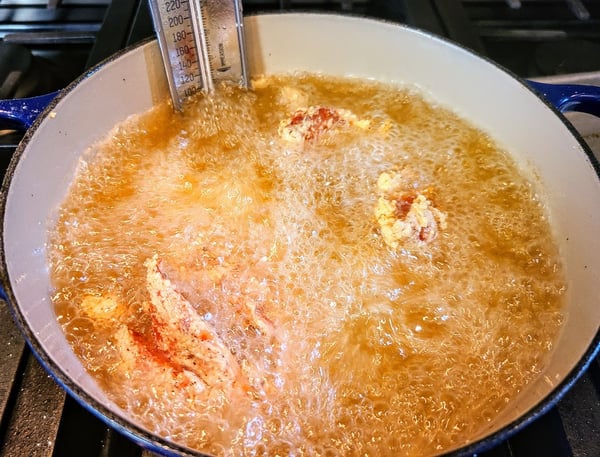
Temperature
Deep frying requires precise temperatures of oil in order to achieve crispy exterior and cooked accurately interiors. On average I usually deep fry between 355° - 400° depending on what I am frying. This is why having the thermometer really is instrumental in deep frying. I am constantly turning my heat source up and down when necessary.
Being patient really is important with this style of cooking and waiting for your oil to be the correct temperature before piling in the food is truly a virtue. If you add too much food at a time or if the items are cold then that will drastically reduce your oil temperature. Working in smaller batches with help prevent this. If the oil gets too cold, anything below 355°, then the food ends up absorbing all of the oil resulting in a greasy, soggy mess. If the oil gets too hot, anything above 400°, then the outside will brown too quickly before the inside can properly cook. This takes some time and finesse to master, but I find the Goldilocks of temperature is right around that 375° mark. Also, don’t forget to use a regular probe thermometer to double check the internal temperature of your foods like fried chicken to make sure they are cooked thoroughly.
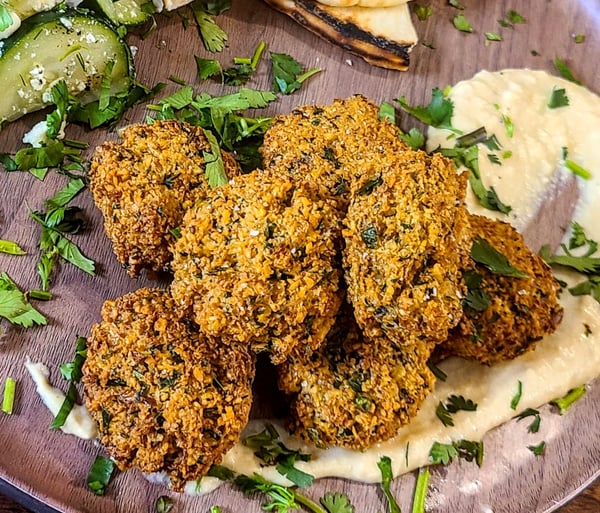
Cooking
There are numerous ways to go about deep frying. You can deep fry desserts like doughnuts. Or you can use different coatings on foods to achieve an epic crust. There is the standard breading procedure of flour, egg and bread crumbs which will provide a crunchy yet crumbly exterior on proteins or vegetables. Batters like tempura for vegetables create a light and crispy texture around the outside. For epic crunch, I like combining potato starch or cornstarch in with flour and dipping my ingredient in a wet component like buttermilk, then dry, then wet, and dry again to create a nice thick crust. I really like deep frying because when done right, the crispy exterior locks in the moisture content of the food to yield great differences of texture in your food.
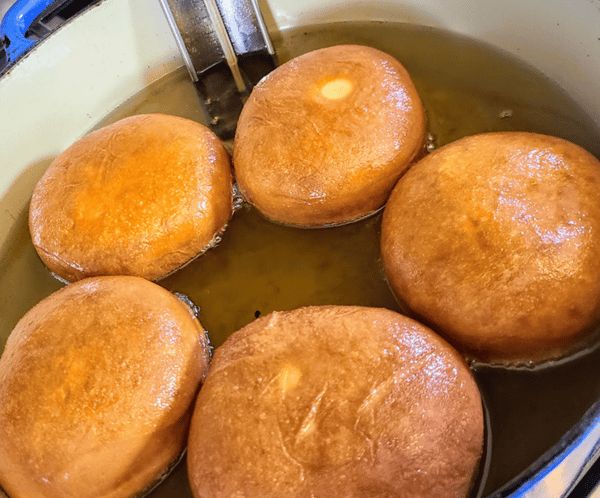
Tips and Tricks
So, you have all the essential equipment, you have the right oil, you know all of the correct cooking temperatures. Now here are some pro advice to get you deep frying with confidence!
- Keep your oil at a consistent temperature around 375°, it is better to err on the side of a bit higher because as you add food the temperature will drop.
- Don’t overcrowd the pot; try and keep an even surface area of food.
- Once the food is golden brown, chances are it is done cooking. Don’t forget to double check internal temperatures!
- Go heavy on seasonings, it needs it. Season the food, the flour or batter, and after it comes out of the oil use a fine salt or seasoning to finish.
- If the food is getting a little too dark on the outside before being done on the inside you can always finish in a 375° oven.
- In general, it is good practice to finish fried foods in the oven for 5-10 minutes. Due to the drying nature of the oven atmosphere, it helps whisk away excess grease and make the exterior of the food extra crisp.
- If you are worried about the mess that may happen, lay down foil around your burner on your stove.
- Moisture is the enemy when frying so make sure your food is dry and when using a batter make sure to let the excess drip off.
- Skim out any debris in the oil in between batches of food
- The closer you are to the oil the less splatter, so my motto is “dip the tip and drop away,” that way even if there is splatter it is going away from you.
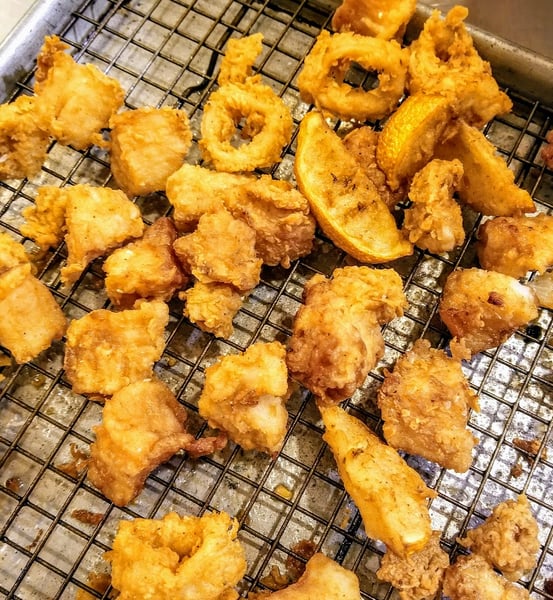 Let me tell you, French fries are my kryptonite when it comes to favorite fried food. I absolutely love fried potatoes in any form, and I could eat my weight in them. Who doesn’t love the comfort and deliciousness that comes with this classic deep fried food? There are some pretty great baked versions of fries that are a little more health friendly if you still can’t bring yourself to fry at home after reading this blog.
Let me tell you, French fries are my kryptonite when it comes to favorite fried food. I absolutely love fried potatoes in any form, and I could eat my weight in them. Who doesn’t love the comfort and deliciousness that comes with this classic deep fried food? There are some pretty great baked versions of fries that are a little more health friendly if you still can’t bring yourself to fry at home after reading this blog.
If you are still hesitant to try deep frying in your own kitchen, come hang out in our kitchen for our hands-on Chicken Fried Lobster class this Friday, September 24 at Lincoln Square.
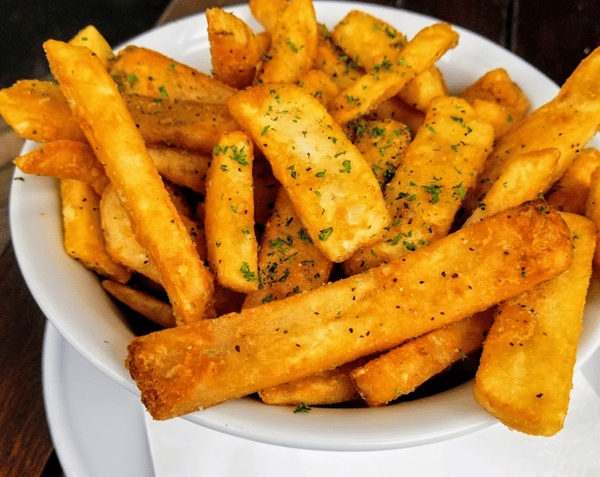
What are your favorite fried foods? Have you been inspired to indulge in some comforting fried foods? I would love to see you try out deep frying at home for this weeks #TCBcookingchallenge. Submit your delectable pictures on our private Facebook group to join in on the fun.



